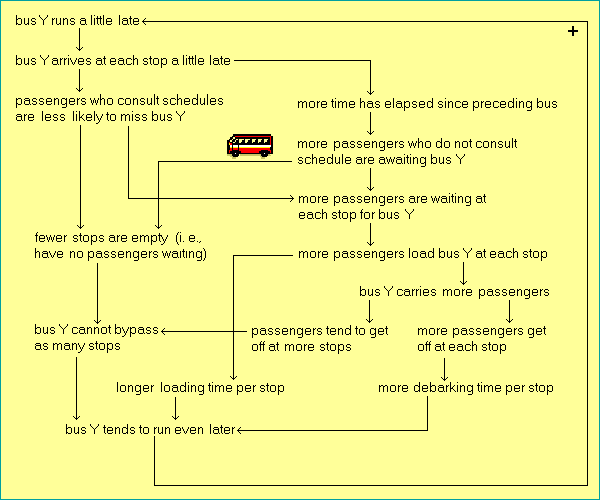In the preceding example, note how the premature arrival of bus X at each stop affects other factors in the system, which seem almost to "conspire" to cause it to traverse its route even faster. Now consider a second bus Y, which because of system "noise" is running slightly slower than usual. As can be seen in the graph below, this fluctuation affects the various factors in exactly the opposite manner, causing bus Y to fall further and further behind schedule.
As some buses run earlier and earlier with fewer and fewer passengers, while others run later and later and become more and more overloaded, the system tends to become increasingly chaotic. The positive-feedback loops take relatively minor "random" fluctuations and amplify them, in the same manner that positive feedback in a recording system (with a monitor turned on) can amplify background noise until it overwhelms the system. 

![]()
